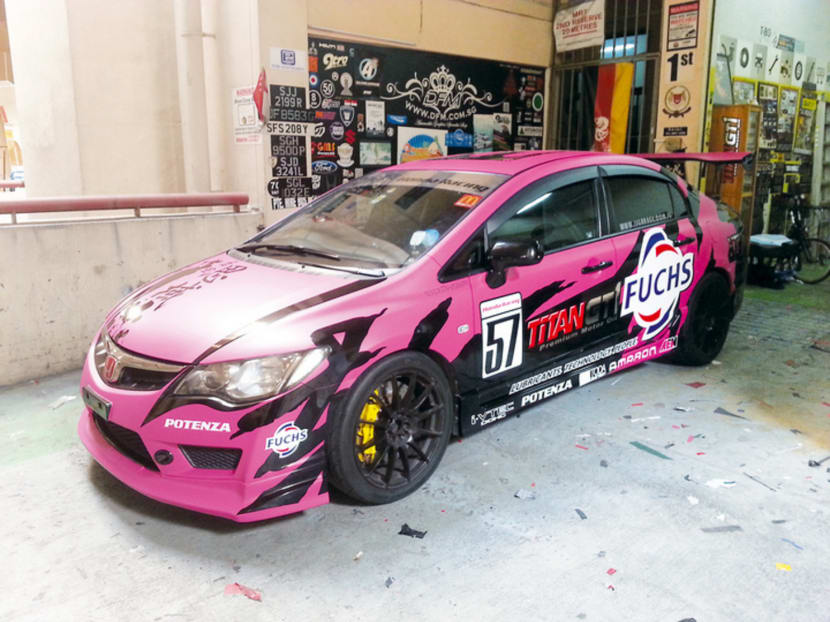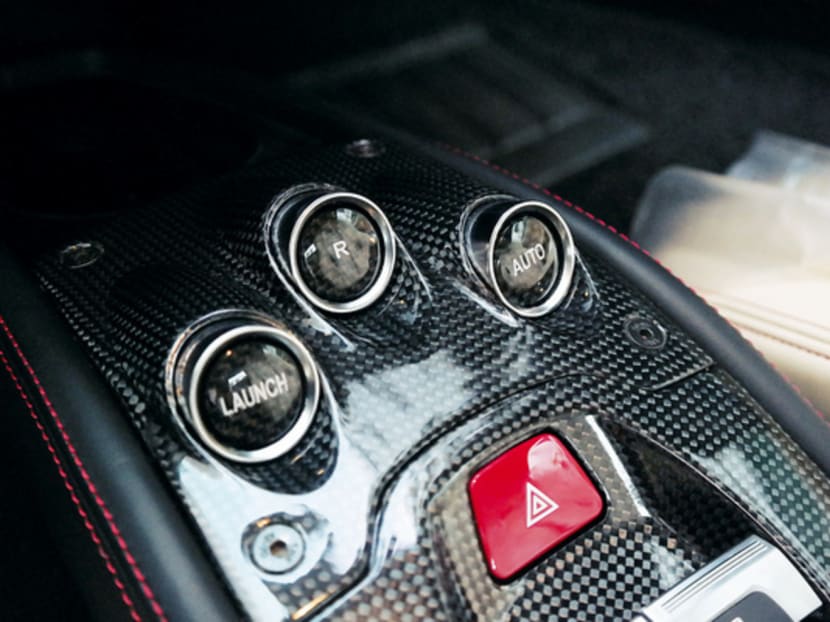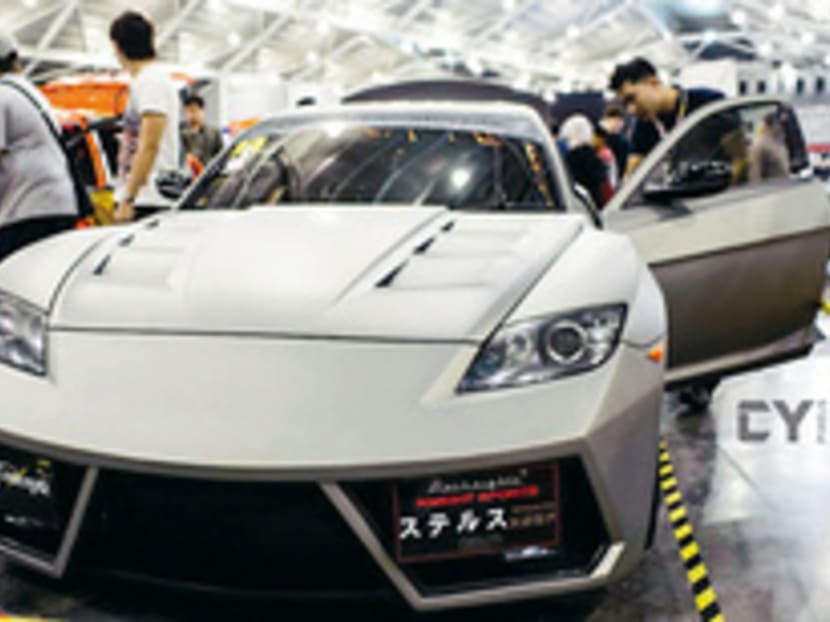3 ways to spruce up your car for CNY
SINGAPORE — What’s the next best thing to a driving a brand new car for the Chinese New Year holidays? How about visiting your relatives in one that looks new?



SINGAPORE — What’s the next best thing to a driving a brand new car for the Chinese New Year holidays? How about visiting your relatives in one that looks new?
According to Land Transport Authority figures, more than half the cars on Singapore roads are at least seven years old. That’s an age when many could do with some sprucing up.
Thankfully there are ways to give your car a makeover without breaking the bank.
THAT’S A WRAP
DFM Pte Ltd — www.dfm.com.sg
Vinyl decals aren’t just for placing cartoon characters on your car or replicating your favourite racing team’s livery. One growing trend is to wrap an entire car in vinyl, and change its colour entirely.
“Wrapping is one way to make your car stand out,” said Alvin Tang from DFM Pte Ltd, a company that specialises in producing decals for homes, businesses and cars. “The ‘in’ thing now is to do a colour change.”
He says that vinyl can offer textures and effects that paint cannot, like a matte, chrome or pearl-like finish. Some vinyl is designed to mimic carbon fibre, an expensive material that racing cars are made of. “A respray can’t give you that effect,” he says.
Mr Tang says that vinyl can also protect a car’s paint from small stone chips, bird droppings and harsh sunlight. It removes the need for polishing a car and, if well taken care of, vinyl can easily last five years or more, he added.
DFM can wrap a car in two or three days, while a thorough respray takes a week. And unlike repainting a car, it’s easy to undo: Just peel it off and start again.
“Sometimes if you respray your car, when it’s time to sell, the buyer’s mindset is always that you must have had an accident,” said Darren Tang, a graphic designer at DFM.
Wrapping a car can start at S$1,000 and go up to S$3,000, depending on the size of the car and the customer’s choice of material. That is generally cheaper than a full respray, but even if it busts your budget there are cheaper things to do with vinyl: A simple set of racing stripes in one colour costs S$100.
YOU’VE GOT TO BE KITTING ME
Graffiti Garage —
www.graffitigarage.sg
If you’re going to spruce your car up, you might as well make it unique. Daniel Wee from Graffiti Garage is a custom builder who can create tailor-made bodykits for cars, and either paint them to match the existing bodywork or spray the entire car in a custom colour.
All you need is an idea. “Customers pass me a design or ask me to design something for them,” he said. He then fabricates the bodykits by hand, making each set out of raw fibreglass.
Mr Wee, who has eight years’ experience, provides one particularly valuable service: Ensuring that customers stay within modification guidelines by the Land Transport Authority.
For example, spoilers on a car must not protrude past the body of the car itself, and should not obstruct the driver’s view.
Apart from spoilers, side skirts and air vents in the bonnet are popular items. As for colours, requests range from bright candy colours to darker, stealthy tones.
Be prepared to pay if you intend to renovate your car with a custom bodykit, however. Prices start at S$5,000 and can reach double that amount. “It all depends on the design,” said Mr Wee.
CARBON EYED
Robson Design — www.robson-design.com
Carbon fibre (or to be technical, carbon fibre reinforced plastic or CFRP) has been a relatively common technology for more than three decades — it’s found in sporting gear, aerospace applications and, of course, automotive parts.
While it’s a lot more common than it used to be, it’s still a modern wonder material. It’s lighter and stronger than steel or aluminium, and like any plastic, able to be formed into any conceivable shape.
The first production car with a CFRP monocoque, the McLaren F1, appeared in 1996, but only recently has CFRP become cost-effective enough to build a “normal” car out of — the BMW i3 is the first truly mass-production car with a CFRP passenger cell.
Still, not everyone can, or would want, to buy an i3 just yet. And given that CFRP has high associations (F1 cars, for example, are made almost entirely of the material) it’s no surprise that it’s now commonly used as a cosmetic (non-mechanical/structural) material too.
Local company Robson Design Pte Ltd specialises in fabricating CFRP parts for cars, although a spokesman says it can conceivably create almost anything, including furniture.
While add-on CFRP parts are common in the after market, the company fabricates actual replacements for interior parts made entirely of CFRP, which give a more well-finished and convincing result.
Customers often request for components like gearshift knobs, buttons and interior plastic trim panels and inlays. One of the most popular parts for the CFRP treatment is steering wheels. Prices start at around S$500-S$600 for one from a regular family car, although the company can also customise it further, making it wider or thicker for example, for extra cost.
When a business says almost anything is possible, it’s usually best taken with a grain of salt.
But not in this case: A recent customer ordered a full bodykit made of CFRP for his ride, to the tune of S$18,000.
CFRP-backed seats are nothing new in high-performance cars, but he liked the space-age material so much, he even ordered a CFRP toilet. We guess that’s a rather different way to improving your power-to-weight ratio.





